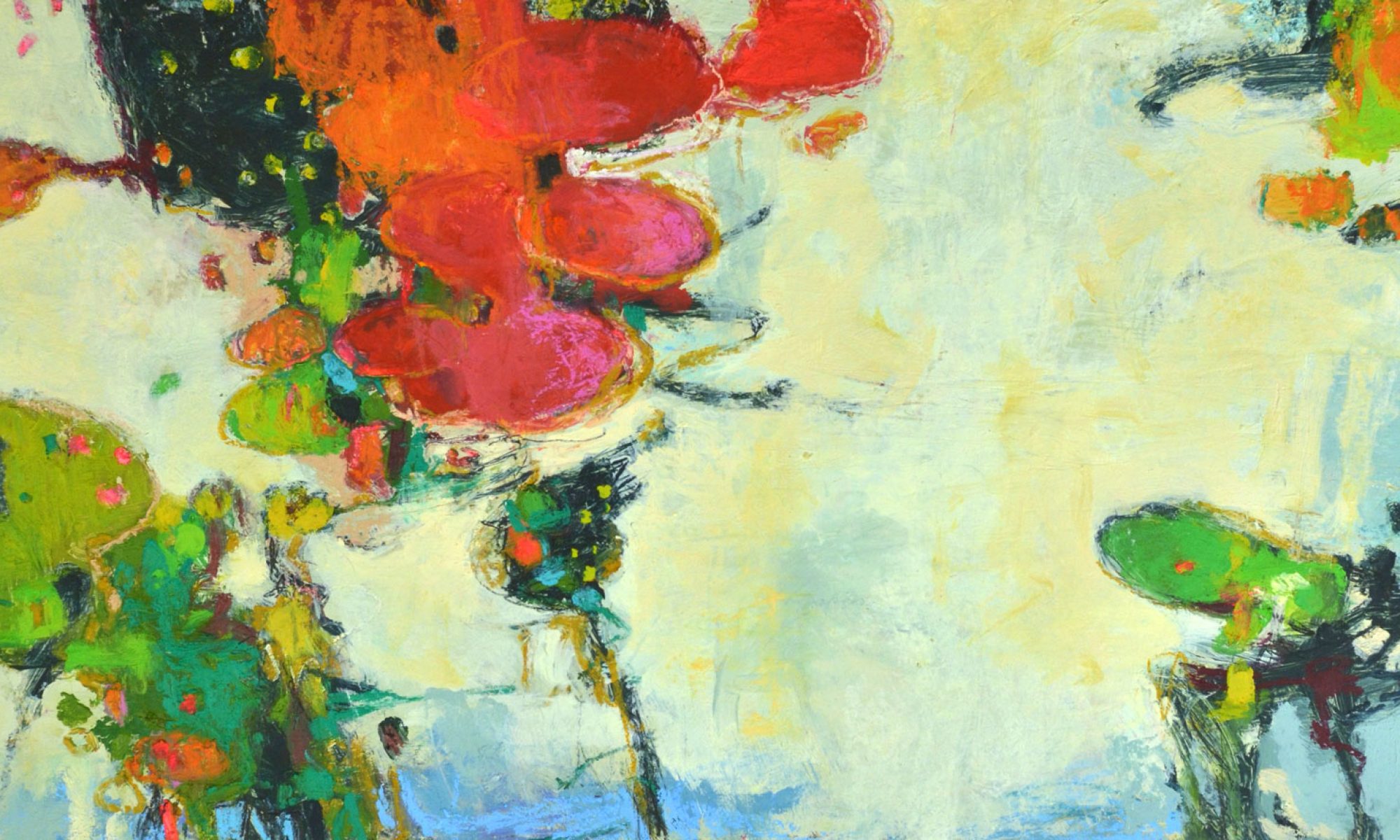
Introduction
Although I’ve painted with encaustic for several years now, and I’m completely in love with its tactile properties and unpredictable nature, I also love working with cold wax medium. I’ve created this page is to help clarify the differences – and similarities – with encaustic painting and cold wax painting.
Cold Wax Basics
The most significant difference between encaustic and cold wax is that, while with encaustic painting the wax must be molten to work with, and then reheated (fused) once its applied to the surface, in cold wax painting there is no heat involved. (Please see my “About Encaustic Painting” page for more encaustic details),
Cold Wax is an oil painting medium which is a buttery soft paste made of beeswax mixed with a small amount of solvent and resin. The cold wax paste is mixed with the oil paint on the palette. Cold wax adds body, transparency and depth to the oil paint. It also speeds up drying time, increases the paint’s workability and does not require the special ventilation of encaustic. Cold wax medium also combines readily with other mediums such as dry pigment, powdered charcoal, marble dust, chalk pastel, graphite and oils sticks.
How I paint with Cold Wax
What I find exciting and compelling about cold wax is how it works as a medium to create layering. Over the years, whether I’ve painted with watercolour, oil, encaustic or cold wax and pigment, I’ve always painted in layers. I guess it’s my “thing”.
I squeeze out my oil paint and dollop a generous blob of cold wax paste onto a glass palette. I then mix the wax into the paint, varying the proportion of wax depending upon the amount of transparency I’m after. Dry powder pigments or powdered charcoal mixed with the wax have a different quality than oil paint, and I’ll often mix them in as well as, or instead of, tubed paint. I also often add marble dust to increase the body and texture of the paint.
Applying cold wax paint is the exciting part. I use a variety of tools such as squeegees, trowels, cabinet scrapers, painting knives, old credit cards, icing spreaders, brayers and rollers, silicone bladed painting tools…. you get the idea. The paint has a creamy, buttery texture and spreads and layers beautifully. One of the most fun parts of the process is the mark making. Again, anything goes – skewers, whisk broom, pine needles, plastic wrap, paper, pencils, — the tools you can use to mark the wax seem limitless. I often transfer paint with waxed paper. I also incorporate marks made by oil sticks, wax crayons, charcoal, graphite. Throughout its drying process the wax responds differently to manipulation. Once it has set up a bit, after a day or several hours, it can also be scraped away, revealing a history of colour and texture beneath.
In these respects; the layering, the manipulation with tools, mark making and the medium’s ease and propensity to conceal and reveal and create a sense of history; in these things cold wax shares a great deal with encaustic.
